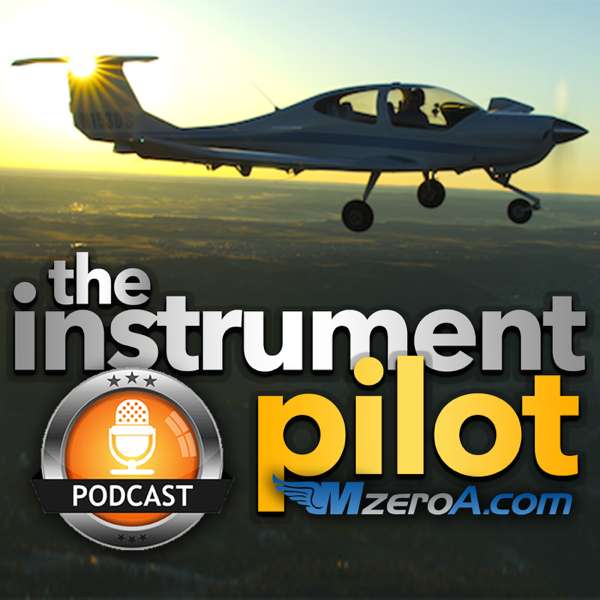The results of the survey about aviation headsets costing less than $400 are in. The survey asked, is there an economical headset that feels good on the head, provides good audio quality, and holds up over time? The answer in this week’s show.

Questions asked in reader and listener email
“Tiring of hearing “tally ho” and “no joy” on ATC [frequencies], my wife and I are on a quest to find the real word on this slang. I love that you always reference the docs –the AIM, the FARs, maybe a chart — and say when your opinion is just your opinion, and I hope that you can help us!” David T-G
“I’ve noticed in the radio simulator, the books, and podcasts you say numeral 9 as the word “nine” instead of “niner”. Is there a reason for this? While I’ve not yet heard controllers refer to numeral 3 as “tree” and 5 as “fife”, it’s been common practice for years to say the 9 as “niner” as in “Cessna seven niner quebec, Hanscom tower, cleared for takeoff runway two niner”. I’m just curious in your experience the “niner” thing is overkill for private pilots.” Andrew W.
These questions answered, plus one question I’ll ask you: Your Question of the Week.
T-minus fife, four, tree, two, one, zero. Launch Radar Contact!
Show Notes:
Survey Responses (By Headset Model)
ASA HS-1 (Approx. $113)

Number of Responders: 4
Comfort: Great! 0; Just okay: 4; Unacceptable: 0
Clarity: Great! 1; Just Okay: 2; Unacceptable: 1
Durability: Great! 2; Just Okay: 2; Unacceptable: 0
Notable Comments: “I bought this headset for the backseat of my Warrior. With the mic plugged in it adds a lot of extra static noise no matter who is talking.”
Gulf Coast Avionics ANR (Approx. $249)

Number of Responders: 2
Comfort: Great! 0; Just okay: 2; Unacceptable: 0
Clarity: Great! 0; Just Okay: 2; Unacceptable: 0
Durability: Great! 1; Just Okay: 1; Unacceptable: 0
Notable Comments: “Pretty comfortable for awhile but once I’m over 2 hours it starts to get heavy and uncomfortable.” “This is my first headset which has been great for the money so it was excellent entry level set.”
Faro G2 Passive (Approx. $170)

Number of Responders: 2
Comfort: Great! 1; Just okay: 1; Unacceptable: 0
Clarity: Great! 1; Just Okay: 1; Unacceptable: 0
Durability: Great! 2; Just Okay: 0; Unacceptable: 0
Notable Comments: “This was the headset I used during training. It is a excellent value, and performed well. ” “These are probably the most comfortable passive, wired headsets you can get. The thick gel cushion makes all the difference. The gel flows around sunglasses temple pieces and never really feel like they are ‘clamping’.” “Very clear. You have dual volume control so you can turn the volume on the radio up and turn your own headset down in case your copilot has a different impedance on his set.” “The construction is solid and the mic boom feels like it’s going to last a long time even when you fiddle with it a lot. Faro offers an excellent warranty so you really don’t have to worry about it if something does break.”
Faro G2 ANR (Approx. $349)

Number of Responders: 4
Comfort: Great! 3; Just okay: 1; Unacceptable: 0
Clarity: Great! 3; Just Okay: 1; Unacceptable: 0
Durability: Great! 3; Just Okay: 1; Unacceptable: 0
Notable Comments: “Mine has the gel ear cups and is very comfortable, even with my glasses on. When I first got the headset, I had to slightly bend the headband to relieve the clamping pressure on mine, but not my wife’s (guess I have a big head). It has been perfect ever since. I use this headset from below zero to 100+ temps and no problem with comfort, even on 5-6 hr flights.” “I have poor hearing and hearing loss. this headset has been a big step up from the DC h10 that I used before. The ANR is very effective and does not distort the audio at all. Everyone says that the transmit audio is perfect, with no background noise. Love the aux audio input that I plug my tablet into for audible alerts.” “I’ve had these for about 2 years and 150 hours. No sign of a problem.”
Flightcom Classic ANR (Approx. $345)

Number of Responders: 2
Comfort: Great! 0; Just okay: 2; Unacceptable: 0
Clarity: Great! 0; Just Okay: 2; Unacceptable: 0
Durability: Great! 2; Just Okay: 0; Unacceptable: 0
Notable Comments: None
David Clark H10-30 (Approx. $280)

Number of Responders: 8
Comfort: Great! 2; Just okay: 6; Unacceptable: 0
Clarity: Great! 2; Just Okay: 6; Unacceptable: 0
Durability: Great! 7; Just Okay: 1; Unacceptable: 0
Notable Comments: “This headset felt a little heavy at first, but that abated. The comfort problem I had related to my sunglasses. Specifically, the side arms and temple piece that curves around my ears did not fit well under the ear seals.”
David Clark H10-13.4 or H10-13S (Approx. $320)

Number of Responders: 9
Comfort: Great! 5; Just okay: 4; Unacceptable: 0
Clarity: Great! 5; Just Okay: 4; Unacceptable: 0
Durability: Great! 7; Just Okay: 2; Unacceptable: 0
Notable Comments:”They start feeling heavy and uncomfortable after about 1.5-2 hours and progressively get more uncomfortable to a point where it’s time to take them off. (Ear/side pressure and top pad).” “The fit feels secure without being tight or clamping. The ear seals (gel ) are very comfortable and seal well. The head pad is also fine I wear them for a maximum of 2 to 3 hours at a time.” “Clarity is functionally good ,they are just not as sweet as the ANR Zulus.” [The Lightspeed Zulu.2 headset costs $800.] “My David Clark 13.4s are about 20 to 25 years old and still look like they are brand new, they still have the original ear seals and head pad.”
David Clark H10-60 (Approx. $360)

Number of Responders: 7
Comfort: Great! 2; Just okay: 5; Unacceptable: 0
Clarity: Great! 3; Just Okay: 4; Unacceptable: 0
Durability: Great! 6; Just Okay: 1; Unacceptable: 0
Notable Comments: “I have been using this headset for a very long time. Comfort is excellent, sound too if you consider that this headset don’t have any ANR system.” “I’ve heard David Clark headsets called ‘David Clamps’ in regards to how they feel on your head after a while. As a sport pilot, my flights aren’t terribly long, and the H10-60 only got uncomfortable around the 1.5-2.0 hour mark. Until that point, though, they’re perfectly comfy.” “Just as clear as any other set I’ve used. One of my flight instructors noticed my set and remarked that while excellent on their own, I should visit the Headsets Inc. booth at Oshkosh and get their ANR conversion for them. Quite honestly, I haven’t felt the need!” “I bought those headset 11 years ago. My total time is about 5,000 hours only helicopter. Sent to DC for a repair only once and the customer service was just amazing. Great company DC indeed.” “I could use these things as wheel chocks or gust locks and they’d still work great! While DC has a reputation for being somewhat heavy/bulky/clunky, I regard that as a positive.”
No Response
I received no response in the survey to the following headset models.
Rugged Air RA-454 (Approx. $179)
Rugged Air RA-900 (Approx. $169)
SkyLite SL-900 (Approx. $170)
Sigtronics S-20 (Approx. $144)
If you would like me to include data about a sub-$400 headset model you’ve tried, but did not appear in the survey, please write to me at Jeff@ATCcommunication.com.
I was going to add Sennheiser headsets to this survey, but this announcement recently showed up at Sennheiser’s website: “Audio specialist Sennheiser is to withdraw from the pilots’ headset business from March 2016. The company will fulfill all its obligations for servicing and spare parts throughout the full guarantee period for its headsets.”
Additionally, I did not include headsets with zero or little sound reduction capability, such as the Telex Airman 750, because they are not suitable for noisy cockpits.
Headsets Costing More Than $400: What Pilots Use
Our focus in this survey was headsets costing less than $400. In a future show, we’ll look at headsets in the $400 and above range. I asked pilots to tell me which $400+ headset model they use. Here is the breakdown from 53 responses.

Your Question of the Week:
You are flying a VFR cross-country using ATC’s radar service for flight following. Your call sign is Skyhawk 9130 Delta. Your current altitude is 4,500. The air traffic controller says, “Piper 571 Romeo Charlie and Skyhawk 9130 Delta, mutual traffic, twelve o’clock and one zero miles, opposite direction, a Cessna 172 at 4,500 and a PA-28 at 5,500.” You do not see the PA-28. Here are your questions.
Question 1: Should you respond as soon as the controller finishes his transmission?
Question 2: When you do respond, what would you say on the radio?
Question 3: What does the controller mean by “opposite direction”?
Question 4: If, after reporting you do not see the traffic, are you required to advise ATC if you see the PA-28 before it passes your position.
When you think you know the answers to those questions, go to ATCcommunication.com/answers. There you’ll find complete answers along with a full explanation of how those answers were derived.

 Our TOPPODCAST Picks
Our TOPPODCAST Picks  Stay Connected
Stay Connected

























































